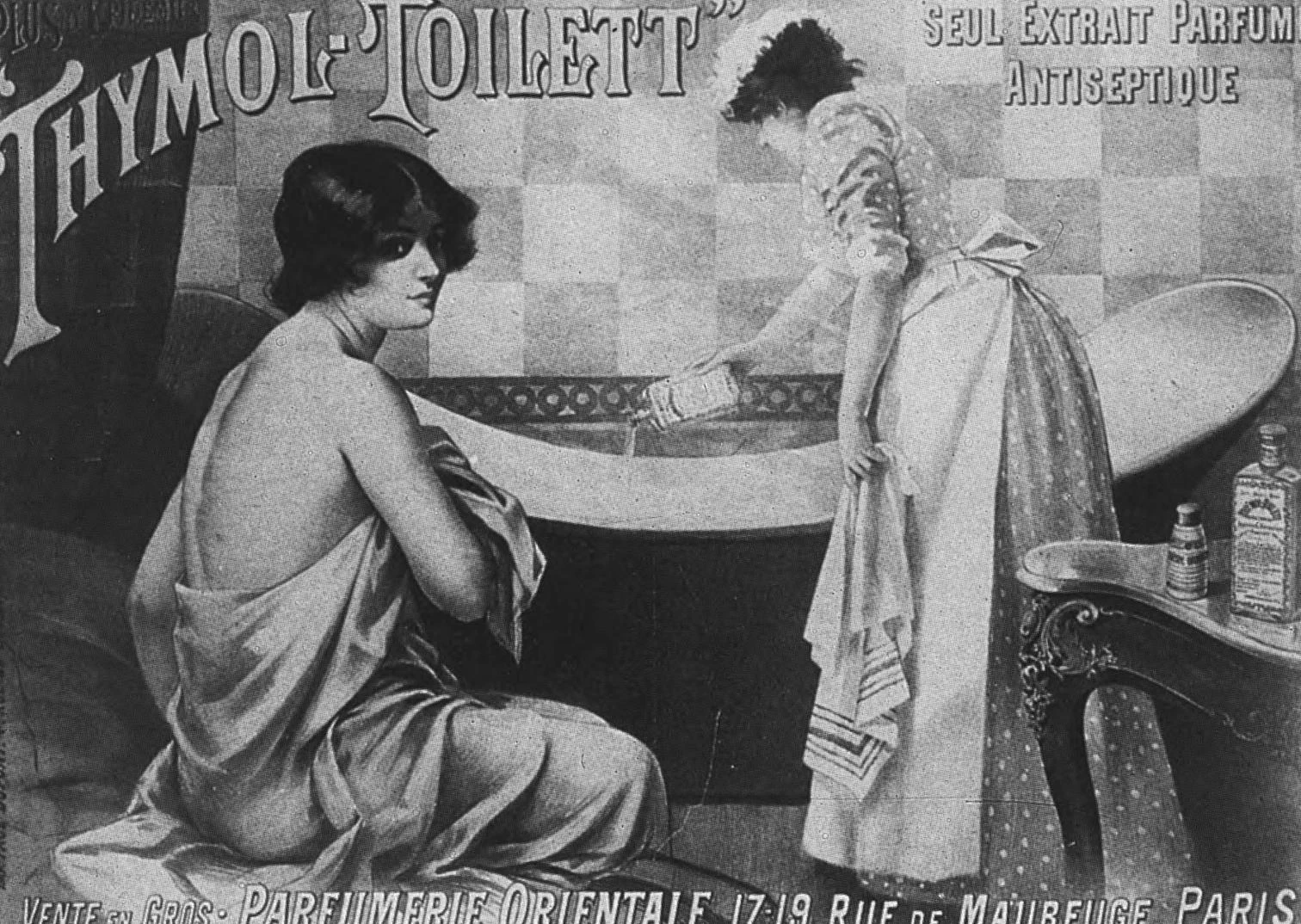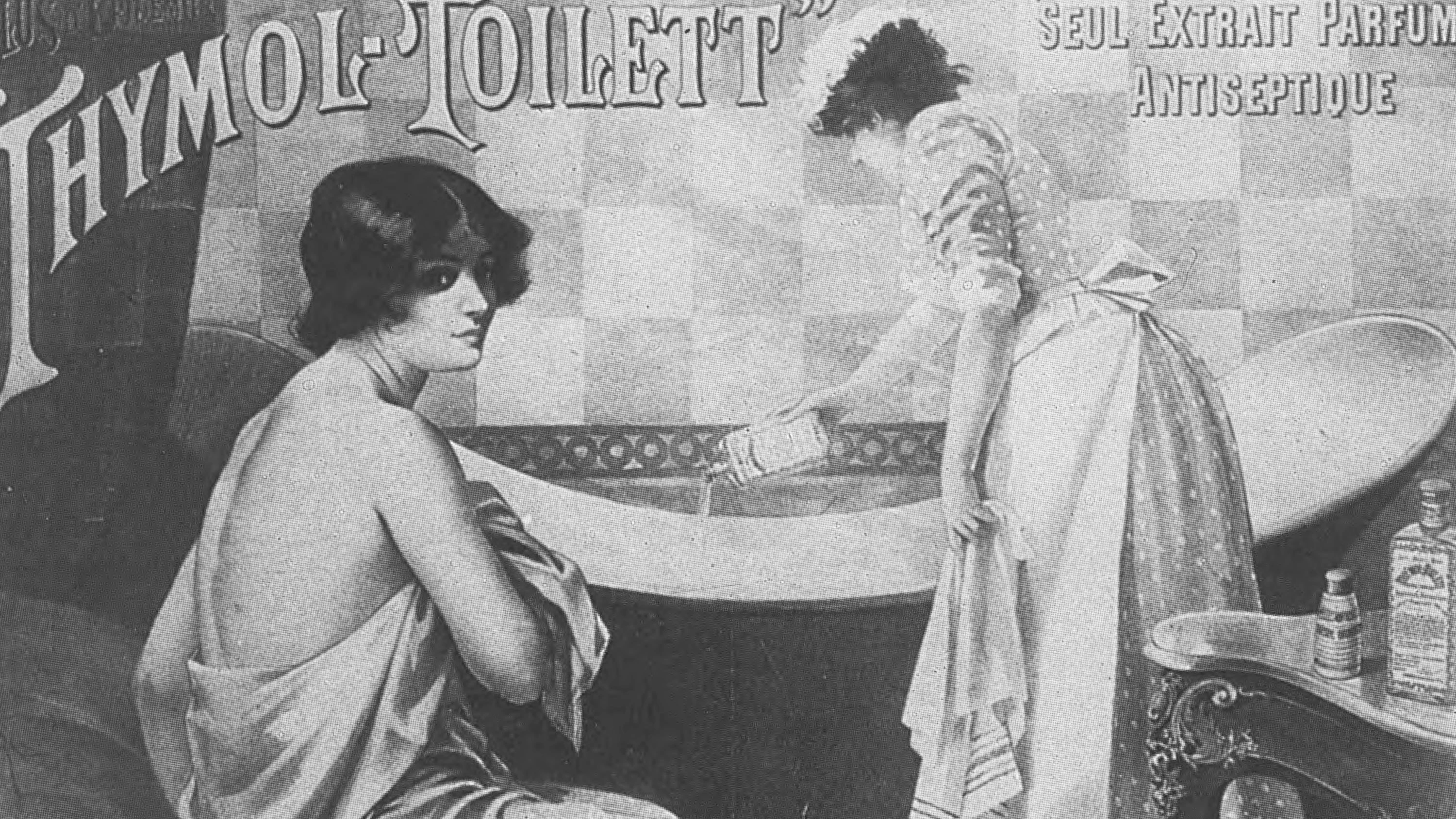
Anuncio de jabón de baño, 1894.
The consecration of hygiene as an essential social value led to major changes in urban and domestic design. The city of the 19th century became a giant metaphor of the human body, through which secret fluids made their way to defend it from the specifically urban horror of the feared epidemics. Starting with the Middle Ages, in which cleanliness was confused with manners, and going through to the hydrophopic Modern Age, Vigarello establishes the birthdate of one of the basic concepts of contemporary civilization, which has itself known many different spacial reflections.
The type o f c leanliness which we here consider to be the oldest is that devoted to only the visible parts o f the body: face and hands. Being clean is taking care o f a limited area o f skin, that which emerges from our clothes and is visible. Books and norms in the Middle Ages that advised noble children as to their behavior said exactly that: Always keep your hands and face clean, wear decent clothes and do not scratch your head in to o obvious a way. There was no reference to the interior side o f clothing or the skin’s sensations and no mention o f intimate feelings. Bodily cleanliness in the Middle Ages was aimed toward others, to witnesses. It was related to the immediately visible. These ancient acts o f physical cleanliness formed part o f social morés, but their history reveals to what extent the perceptible surface o f the body and the gaze o f others established their rules...[+]






